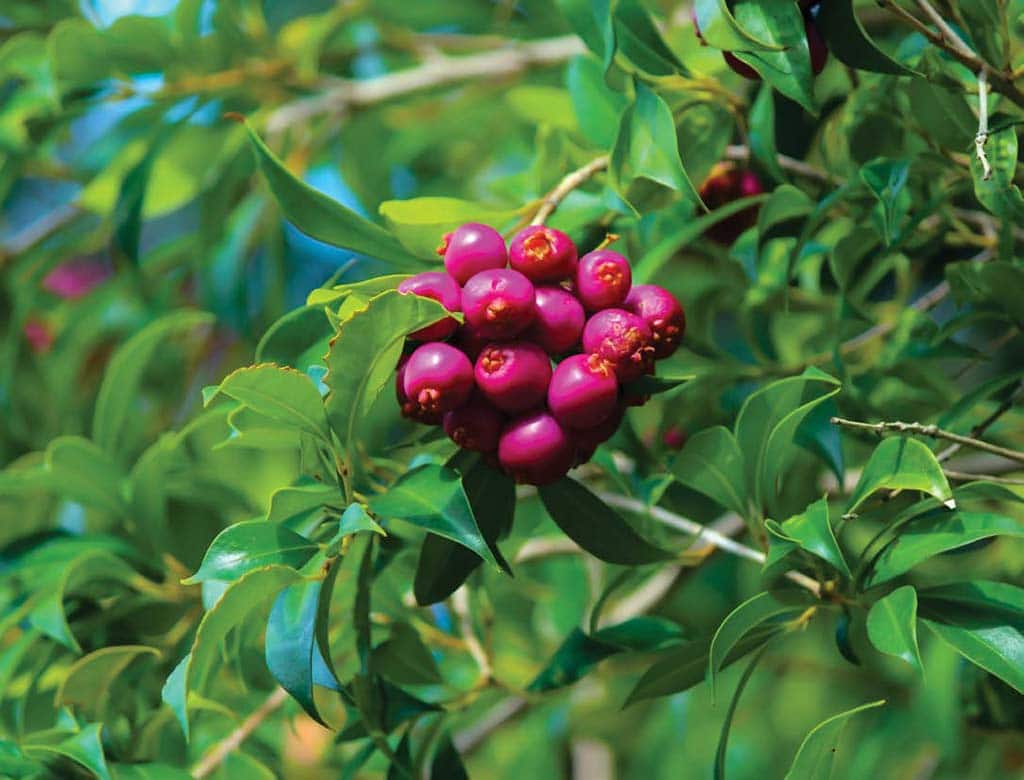The fruit of the lilly pilly tree is called riberry, although some call it lilly pilly. There are about 60 lilly pillies in Australia, most in the genus syzygium, and most have edible fruit. Some fruit is overly astringent or bland. The one we will concentrate on is Syzygium luehmannii, small-leaved or clove lilly pilly, but I’ll also recommend S. paniculatum, magenta lilly pilly.
Description – Clove Lilly Pilly
The fruit of S. luehmannii (riberry, or clove lilly pilly) is small – up to 13 mm long, pear-shaped and dull red with one pip. The tree, with its tear-shaped leaves, can grow up to 30 metres in the wild, but in cultivation and as an ornamental street tree it is kept to between 5–10 m. It fruits from December to February.
S. luehmannii trees are generally found in the wild in northern New South Wales and are native to rainforests from Kempsey, NSW, to Cooktown in north-east Queensland. The species also has the potential to be grown in many other areas.

